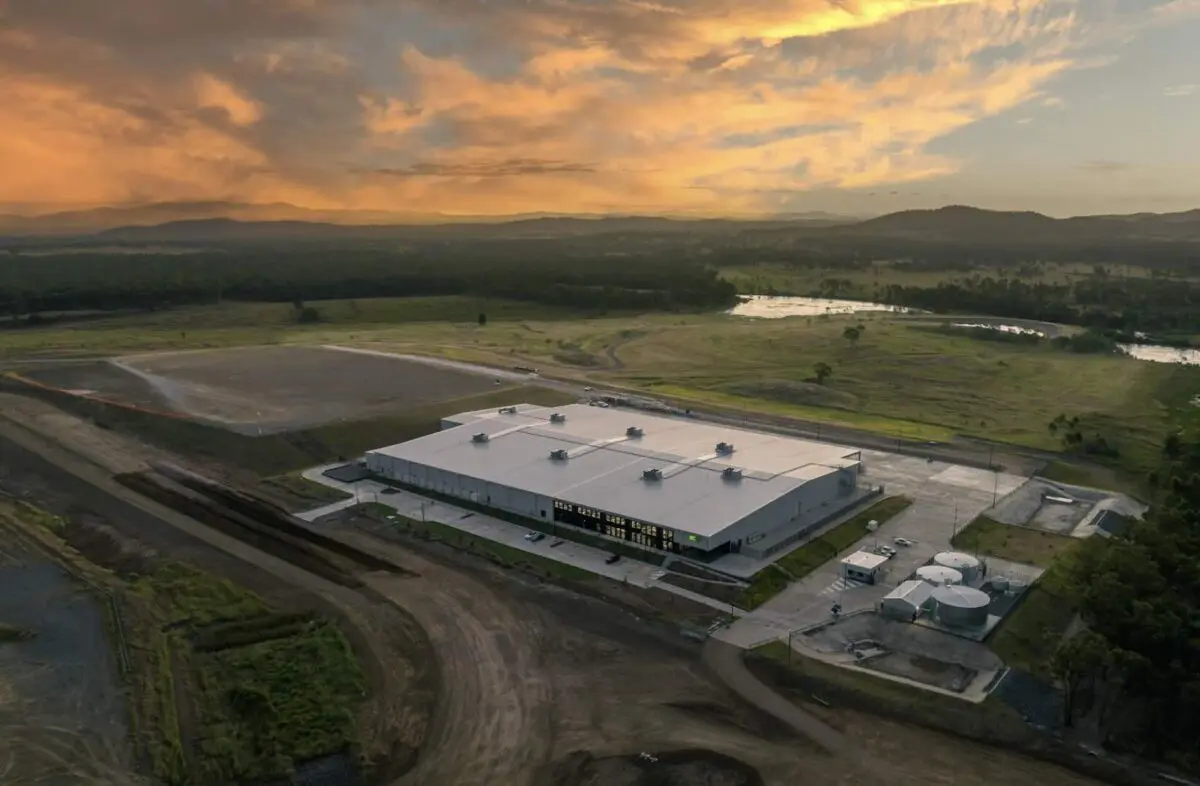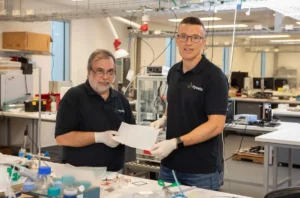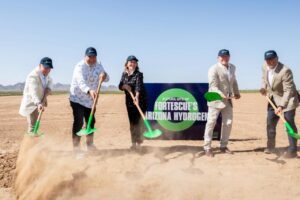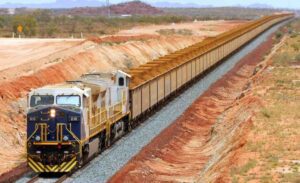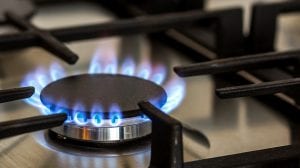Iron ore and green energy giant Fortescue Metals says it is still on track to deliver its ambitious target of producing 15 million tonnes of green hydrogen a year by 2030, but says its Australian project plans are being hamstrung by high power prices.
The company said on Wednesday that its first green hydrogen projects in the US are progressing well and “priming the pump” for the technology, and it expects to reach final investment decisions this year on larger projects in Norway and Brazil this year, and then even bigger projects in Morocco.
“We totally believe we’re gonna get there on the decarb targets, we’re working very hard,” Mark Hutchinson, the head of Fortescue Energy, told analysts and media in its first quarter earnings call.
Hutchinson pointed to the progress on using green ammonia as a marine fuel for shipping and the successful trials by Fortescue’s Green Pioneer ship in Singapore, and he said shipping, green iron, fertilizer and industrial processes would be the cornerstone for green hydrogen demand.
However, he confirmed that the country’s biggest hydrogen project in Australia, the Gibson Island facility near Brisbane where Fortescue hoped to build a 550 MW capacity electrolyser facility to make green ammonia, is being held back by concerns about power prices.
Fortescue has already delayed a financial investment decision three times, despite having locked in part of its renewable energy supply with Genex Power’s giant Bulli Creek solar project in southern Queensland.
Hutchinson said the reason for this is that the cost of the balance of the power supply is too great, and the company is still talking with the federal government about support.
“We’re encouraging the Australian Government to do all it possibly can to … get the power price in Australia down on the east coast,” he said, adding that the concerns were around both the cost of both bulk energy and dispatchable energy.
“We don’t want to be switching the plant on and off as much as possible,” he said. “Otherwise it’s a good project.”
Fortescue has been making advances on its electric mining equipment, rolling out electric excavators and trialling its first electric 240 tonne haul truck at its iron ore mines where it intends to real “real zero” emissions by 2030 and eliminate the consumption of 740 million litres of diesel a year.
The company has also opened its Gladstone electrolyser manufacturing facility, which it describes as the most advanced of its type in the world.
Forttescue also revealed in its first quarter briefing that the planned capital spend for Fortescue Energy in 2024 had been scaled down from $US800 to $US700 million. Hutchinson said this was largely due to cost saving initiatives and “efficient use of capital,” and did not reflect a reduced head count.
Fortescue Metals CEO Dino Otranto spoke of his recent visit to China, which dominates the world in the manufacture of solar, wind turbines and electric vehicles.
“China’s rollout of wind and solar capacity blew my mind,” Otranto said.
“And this renewable energy infrastructure needs a lot of steel. In fact, last year, China built 300 gigawatts of renewable energy and invested almost $900 billion, making it the largest driver of China’s overall economic growth.
“The automotive industry there is another example where I’m amazed by the EV penetration happening in China right now. China accounted for over 60% of the global EV sales last year.”

